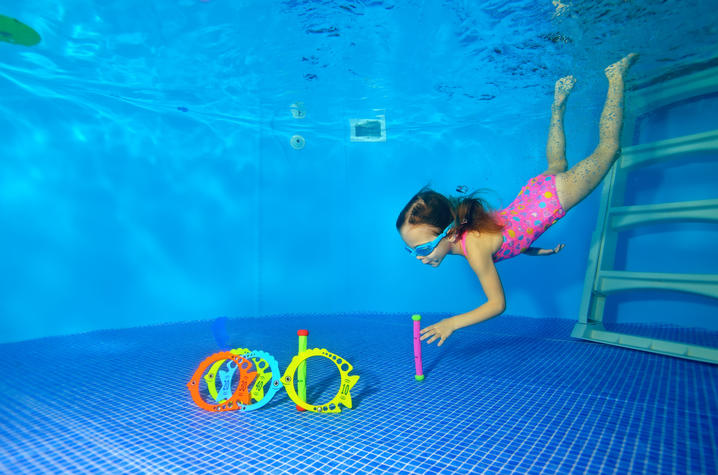Be visible underwater and other water safety tips

LEXINGTON, Ky. (June 26, 2023) — The temperature is rising, and everyone is heading to the pool, lake or beach to cool off. But did you know the color of your swimsuit plays a big part in water safety?
According to the CDC (Centers for Disease Control and Prevention), drowning is the leading cause of death for children ages 1 to 4, and the second leading cause of death for children ages 5 to 14. Drowning deaths rates for Black children are 7.6 times higher than rates for white children. In non-fatal incidents, drowning injuries can cause brain damage and other serious outcomes, including long-term disability.
Experts are urging parents and caregivers to avoid putting their kids in blue and green swimsuits. Even in shallow water, blue and green swimsuits are very difficult to see. Drowning can happen very quickly and quietly, and visibility is important when supervising kids around water. Stick with bright, neon colors for swimsuits, pool toys and floatation devices.
Here are some other tips to keep kids safe in and around water this summer:
- Use designated swimming areas and recreational areas whenever possible. Look for posted signs about open water hazards. Also look for signs that say when lifeguards will be present.
- Avoid distractions when your child is in or around water. Drowning is often silent and can occur in minutes. Put away phones, books and magazines.
- Choose a water watcher. When there are several adults present, alternate who is responsible for watching children in or near the water.
- Keep your ears open as well as your eyes. If your child gets quiet, find out why.
- Wear a U.S. Coast Guard-approved life jacket when boating or participating in other water activities. Choose a life jacket that is right for your child’s weight and water activity. Weak swimmers and children who cannot swim should wear life jackets when they are in or near water.
- Learn CPR and basic water rescue skills. It is important to know how to respond in an emergency without putting yourself at risk of drowning. Local chapters of organizations such as the Red Cross offer CPR and water safety courses.
Remember, drowning doesn’t look like drowning. In TV and movies, a drowning person waves their hands and calls for help. In reality, drowning is silent. A drowning person may appear to be relaxed and quietly treading water. If you see someone with their head tilted back and they look like they are climbing an invisible ladder, call for help immediately.
UK HealthCare is the hospitals and clinics of the University of Kentucky. But it is so much more. It is more than 10,000 dedicated health care professionals committed to providing advanced subspecialty care for the most critically injured and ill patients from the Commonwealth and beyond. It also is the home of the state’s only National Cancer Institute (NCI)-designated Comprehensive Cancer Center, a Level IV Neonatal Intensive Care Unit that cares for the tiniest and sickest newborns and the region’s only Level 1 trauma center.
As an academic research institution, we are continuously pursuing the next generation of cures, treatments, protocols and policies. Our discoveries have the potential to change what’s medically possible within our lifetimes. Our educators and thought leaders are transforming the health care landscape as our six health professions colleges teach the next generation of doctors, nurses, pharmacists and other health care professionals, spreading the highest standards of care. UK HealthCare is the power of advanced medicine committed to creating a healthier Kentucky, now and for generations to come.




